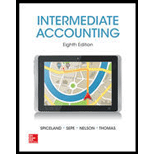
Concept explainers
(1)
Pension expense: Pension expense is an expense to the employer paid as compensation after the completion of services performed by the employees.
To determine: Pension expense at the end of 2016.
(2)
Projected benefit obligation (PBO): This is the estimated present value of future retirement benefits, accumulated based on the future compensation levels.
To determine: PBO at the end of 2016
(3)
Plan assets: The assets which are used to satisfy the postretirement obligation, are held as a pension fund by the trustee, to invest the employer contributions,
To determine: The pension plan assets at the end of 2016
(4)
Net pension asset or net pension liability: The net totals of PBO and pension plan assets are reported as net pension asset or net pension liability. Net pension asset is reported, if the net balance is a debit. Net pension liability is reported, if the net balance is a credit.
To determine: The net pension asset (liability) at the end of 2016.
(5)
Debit and credit rules:
- Debit an increase in asset account, increase in expense account, decrease in liability account, and decrease in
stockholders’ equity accounts. - Credit decrease in asset account, increase in revenue account, increase in liability account, and increase in stockholders’ equity accounts.
To journalize: Entries related to net pension expense, funding, and retiree benefits paid in 2016.
Want to see the full answer?
Check out a sample textbook solution
Chapter 17 Solutions
INTERMEDIATE ACCOUNTING
- Peralta Distillery has estimated budgeted costs of $134,500, $155,000, and $175,500 for the manufacture of 5,000, 7,000, and 9,000 liters of spirits, respectively, next quarter. What are the variable and fixed manufacturing costs in the flexible budget for Peralta Distillery?arrow_forwardCan you solve this general accounting question with the appropriate accounting analysis techniques?arrow_forwardPlease provide correct answerarrow_forward
- Gaulle Metal Industries manufactures a single product that sells for $75 per unit. Variable costs are $42 per unit, and fixed costs total $168,000 per month. Calculate the operating income if the selling price is raised to $82 per unit, maintenance expenditures are increased by $22,000 per month, and monthly unit sales volume becomes 6,200 units.arrow_forwardCompute the cost should be allocated to the warehouse.arrow_forwardVine Orchards purchased a tractor for $278,400, with an estimated residual value of $12,300. The tractor is expected to have a useful operating life of 45,000 hours. During July, the tractor was operated for 165 hours. Determine the depreciation for the month.arrow_forward
- Monk Enterprises had accounts receivable of $9,500 at the beginning of the month and $4,200 at the end of the month. Credit sales totaled $52,000 during the month. Calculate the cash collected from customers during the month, assuming that all sales were made on account.arrow_forwardI need help with this problem and accounting questionarrow_forwardgeneral accountingarrow_forward

 AccountingAccountingISBN:9781337272094Author:WARREN, Carl S., Reeve, James M., Duchac, Jonathan E.Publisher:Cengage Learning,
AccountingAccountingISBN:9781337272094Author:WARREN, Carl S., Reeve, James M., Duchac, Jonathan E.Publisher:Cengage Learning, Accounting Information SystemsAccountingISBN:9781337619202Author:Hall, James A.Publisher:Cengage Learning,
Accounting Information SystemsAccountingISBN:9781337619202Author:Hall, James A.Publisher:Cengage Learning, Horngren's Cost Accounting: A Managerial Emphasis...AccountingISBN:9780134475585Author:Srikant M. Datar, Madhav V. RajanPublisher:PEARSON
Horngren's Cost Accounting: A Managerial Emphasis...AccountingISBN:9780134475585Author:Srikant M. Datar, Madhav V. RajanPublisher:PEARSON Intermediate AccountingAccountingISBN:9781259722660Author:J. David Spiceland, Mark W. Nelson, Wayne M ThomasPublisher:McGraw-Hill Education
Intermediate AccountingAccountingISBN:9781259722660Author:J. David Spiceland, Mark W. Nelson, Wayne M ThomasPublisher:McGraw-Hill Education Financial and Managerial AccountingAccountingISBN:9781259726705Author:John J Wild, Ken W. Shaw, Barbara Chiappetta Fundamental Accounting PrinciplesPublisher:McGraw-Hill Education
Financial and Managerial AccountingAccountingISBN:9781259726705Author:John J Wild, Ken W. Shaw, Barbara Chiappetta Fundamental Accounting PrinciplesPublisher:McGraw-Hill Education





